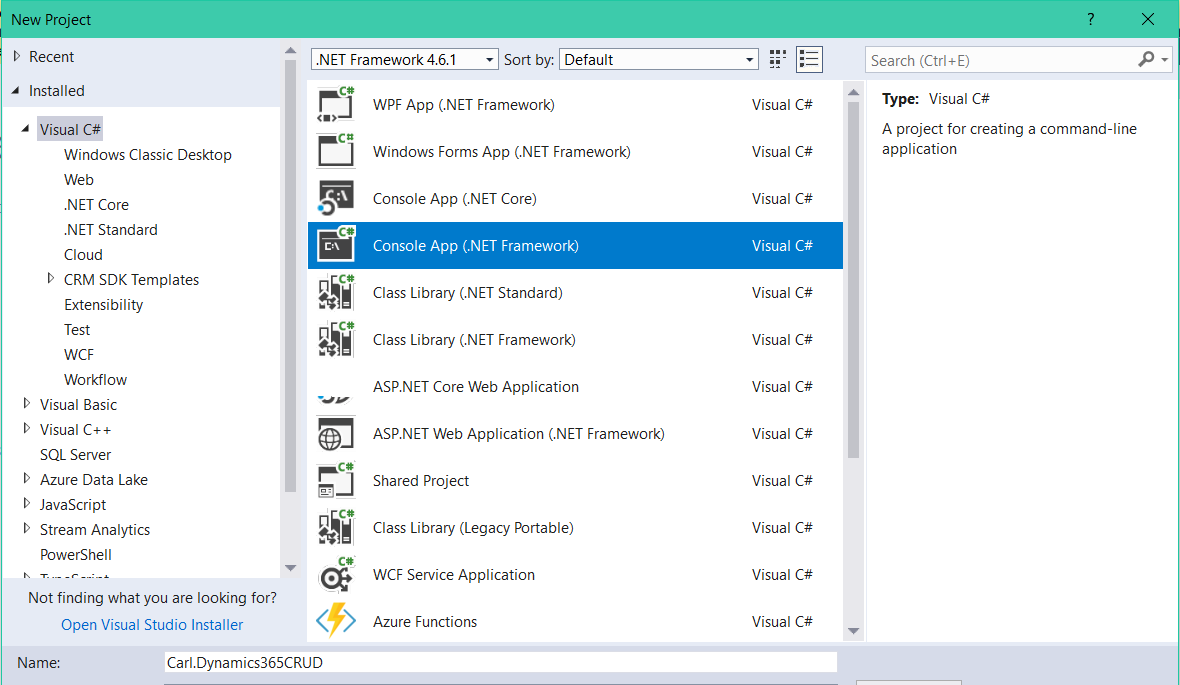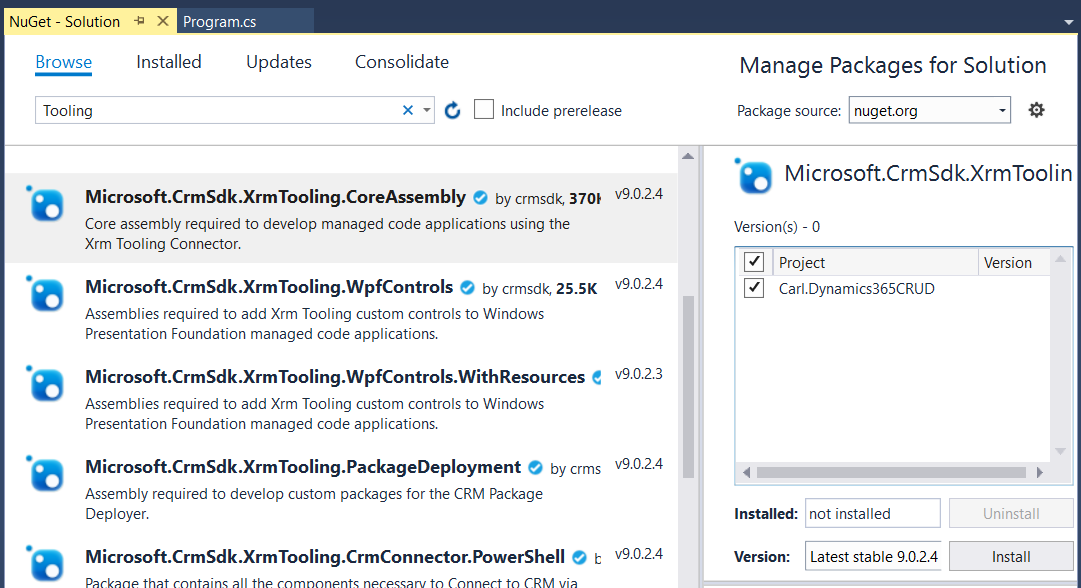In this post, we will create a console app that performs a CRUD operation on Dynamics 365.
In Visual Studio, create a new Console App:

You will see:

Add Microsoft.CrmSdk.Xrm.Tooling.CoreAssembly using NuGet:

Code:
using System.Collections.Generic; |
using System.Threading.Tasks; |
using Microsoft.Xrm.Tooling.Connector; |
using Microsoft.Crm.Sdk.Messages; |
using Microsoft.Xrm.Sdk.Query; |
namespace Carl.Dynamics365CRUD |
static void Main(string[] args) |
var connectionString = @"AuthType = Office365; Url = https://yourorg.crm.dynamics.com/;Username=youremail;Password=yourpwd"; |
CrmServiceClient conn = new CrmServiceClient(connectionString); |
IOrganizationService service; |
service = (IOrganizationService)conn.OrganizationWebProxyClient != null ? (IOrganizationService)conn.OrganizationWebProxyClient : (IOrganizationService)conn.OrganizationServiceProxy; |
Entity contact = new Entity("contact"); |
contact["firstname"] = "Bob"; |
contact["lastname"] = "Smith"; |
Guid contactId = service.Create(contact); |
Console.WriteLine("New contact id: {0}.", contactId.ToString()); |
Entity retrievedContact = service.Retrieve(contact.LogicalName, contactId, new ColumnSet(true)); |
Console.WriteLine("Record retrieved {0}", retrievedContact.Id.ToString()); |
Entity updatedContact = new Entity("contact"); |
updatedContact = service.Retrieve(contact.LogicalName, contactId, new ColumnSet(true)); |
updatedContact["jobtitle"] = "CEO"; |
updatedContact["emailaddress1"] = "test@test.com"; |
service.Update(updatedContact); |
Console.WriteLine("Updated contact"); |
ColumnSet attributes = new ColumnSet(new string[] { "jobtitle", "emailaddress1" }); |
retrievedContact = service.Retrieve(contact.LogicalName, contactId, attributes); |
foreach (var a in retrievedContact.Attributes) |
Console.WriteLine("Retrieved contact field {0} - {1}", a.Key, a.Value); |
service.Delete(contact.LogicalName, contactId); |
Console.WriteLine("Deleted"); |
Console.WriteLine(ex.Message); |




